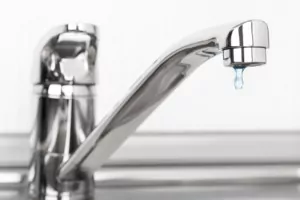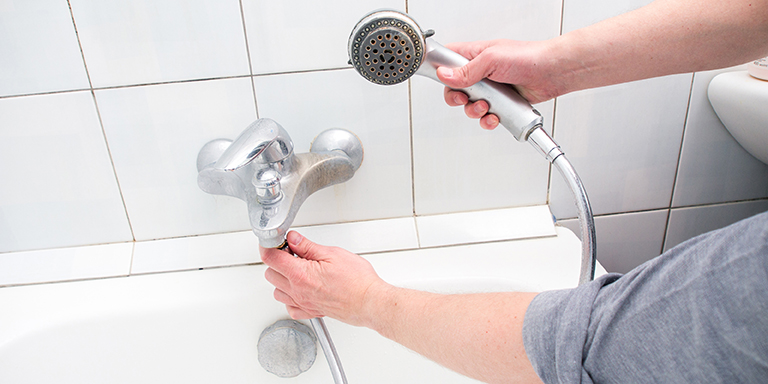Effects of a Damaged Faucet
Effects of a Damaged Faucet
Blog Article
Are you on the lookout for details about Causes and Consequences of a Leaky Faucet?

Intro
A leaky faucet may feel like a minor nuisance, yet its effects extend far beyond the occasional drip. Comprehending the impacts of a leaking faucet is vital for both homeowners and the environment. In this short article, we'll check out the different effects of this typical family concern and why addressing it promptly is important.
Reasons For Leaky Faucets
Leaking faucets can result from a variety of factors, including damage, high water stress, and deterioration. With time, the consistent use taps can cause worn-out seals and gaskets, triggering leaks to create. In addition, too much water stress can place pressure on plumbing components, resulting in leaks. Rust and corrosion can also compromise tap elements, making them vulnerable to leakage.
Water Wastefulness
One of the most significant consequences of a dripping tap is water waste. Also a little drip can add up to gallons of drainage gradually. This not only increases water expenses however also adds to water shortage and environmental destruction. Attending to leaky taps without delay is critical for preserving this valuable source and decreasing its effect on the planet.
Financial Effect
In addition to drainage, leaky taps can likewise have a significant economic effect. Enhanced water costs are a straight consequence of water wastefulness, costing home owners numerous bucks yearly. Moreover, the expense of repairing water damage brought on by leaks can be substantial, particularly if left neglected for an extended period.
Ecological Impact
The environmental influence of leaky taps expands beyond water waste. By preserving water, property owners can contribute to wider initiatives to mitigate water shortage and secure all-natural ecosystems. Sustainable choices such as rain harvesting and water-efficient fixtures can even more lower the environmental footprint of family water use.
Technological Solutions
Developments in innovation have actually caused the development of clever taps and water-saving tools that assist lessen water wastefulness. Smart faucets make use of sensing units to spot movement and change water circulation as necessary, reducing waste without sacrificing benefit. Water-saving tools such as aerators and low-flow showerheads are also effective in conserving water without compromising performance.
Global Perspectives
While leaky faucets may seem like a localized problem, they add to wider worldwide difficulties such as water deficiency and environment adjustment. In areas already dealing with water tension, every drop counts, making leak avoidance and fixing essential. By taking on water-saving techniques and purchasing sustainable technologies, property owners can play their part in addressing these pressing international problems.
Regulative Steps
Government laws play a critical duty in alleviating the impact of leaky taps and promoting water preservation. From constructing codes that need water-efficient fixtures to water-saving motivations and refunds, policymakers have a range of devices at their disposal. By carrying out and imposing these regulations, federal governments can guarantee that homeowners focus on water conservation in their day-to-days live.
Neighborhood Impact
Attending to leaky taps requires cumulative efforts at the area level. By raising understanding about the relevance of water conservation and giving resources for leakage detection and fixing, regional authorities can encourage homeowners to do something about it. Initiatives such as water-saving discount programs and leak detection campaigns can incentivize behavior modification and advertise responsible water use.
Case Studies
Real-life instances of the effect of leaky faucets highlight the importance of positive upkeep and timely repair services. From water damages to skyrocketing water expenses, the effects of disregarding leaks can be extreme. By sharing these case studies, property owners can much better understand the importance of attending to dripping faucets quickly.
Educational Campaigns
Educational projects play an essential duty in increasing recognition regarding the impacts of dripping faucets and promoting water preservation methods. Via workshops, seminars, and online resources, house owners can find out just how to spot and repair leaks themselves. By equipping people with expertise and devices, instructional projects can cultivate a society of liable water use within areas.
Wellness Problems
Dripping taps can develop helpful settings for mold and mildew and mold growth, presenting health and wellness dangers to residents. The existence of mold can intensify respiratory issues and allergic reactions, specifically in at risk people. Furthermore, water damage arising from leakages can jeopardize the structural integrity of structures and cause expensive repair work.
DIY vs. Specialist Fixing
When confronted with a leaky faucet, home owners commonly dispute whether to attempt repairs themselves or work with an expert plumber. While DIY fixings can save money, they might not always resolve the underlying issue effectively. Specialist plumbing technicians have the knowledge and equipment to identify and repair leakages properly, ensuring lasting services and satisfaction for house owners.
Preventive Measures
Stopping leaky taps requires routine maintenance and positive measures. Basic jobs such as replacing worn-out washing machines and seals can avoid leakages from developing. Furthermore, updating to top quality components and reducing water pressure can aid prolong the life expectancy of taps and reduce the danger of leakages.
Conclusion
To conclude, the impacts of a dripping faucet prolong much past the occasional drip. From water wastage and boosted water costs to health issues and ecological influence, the consequences of neglecting leakages can be substantial. By dealing with leaking taps without delay and taking on water-saving techniques, property owners can reduce these impacts and add to an extra lasting future.
Why You Shouldn’t Ignore a Leaky Faucet in Your Home
What Causes a Leaky Faucet?
Various factors can cause a leak, from loose and worn-out parts to corrosion. Your faucet has four essential components from which most plumbing issues will stem: the O-ring, the valve seat, the washer and the gasket.
What Is an O-Ring?
The O-ring is a stem screw that fastens parts of the faucet in place, preventing water from leaking out of the spout. Depending on your faucet type, the stem might have multiple O-rings. Water will drip from the faucet’s handles and base if this part breaks or deteriorates.
What Is a Valve Seat?
The valve seat controls the flow and temperature of the water. Found at the base of the handle, it works as a seal for the faucet’s stem. The valve seat ensures the water is allowed to flow or is blocked as the handles dictate. You’ll know it’s malfunctioning when water leaks from your faucet’s sides.
What Is a Gasket?
The gasket is found between the water inlet and the valve stem. It creates a seal between the faucet and the sink, holding its joints by aerators attached to the stem’s head. Water will trickle out from the base if the gasket isn’t working.
What Is a Washer?
The washer secures the handles and prevents leakage, serving a similar purpose to the O-ring. While the O-ring is ordinarily round and made from an elastic material, such as rubber, the washer is square-shaped and composed of brass, copper and other hard metals. If it malfunctions, corrodes or has been improperly installed, water will leak out of the handles, causing that incessant faucet drip.
Why Is a Leaky Faucet Dangerous?
A leaky faucet left alone for too long can have significant consequences.
Pest Infestations
Since bugs and rodents gravitate towards the scent of water, a leaky faucet will draw pests to your sink. Both are looking for leaks accessible through crawl spaces, which a faucet provides. If you leave water dripping for too long, you run the risk of an infestation.
Rust
If one of the faucet parts has started to corrode, the resulting rust can spread to your pipes and valves with startling speed. The rust might even lead to cracks or other impairments, resulting in more severe plumbing issues.
Your sink could also sustain damage from a leaky faucet. The water in your tap possesses sparse elements of calcium and iron that can stain your sink with repeated and prolonged exposure. Once those elements in the water have been open to the air for some time, your sink will start to rust, creating marks that can be difficult to remove.
https://www.tomsmechanical.com/blog/why-you-shouldnt-ignore-a-leaky-faucet-in-your-home

Do you like more info about Health Risks Posed by Leaking Faucets? Give a comment directly below. We would be pleased to hear your opinion about this article. We are looking forward to see you back again later on. Sharing is good. Helping others is fun. Bless you for being here. Don't hesitate to come visit our website back soon.
Report this page